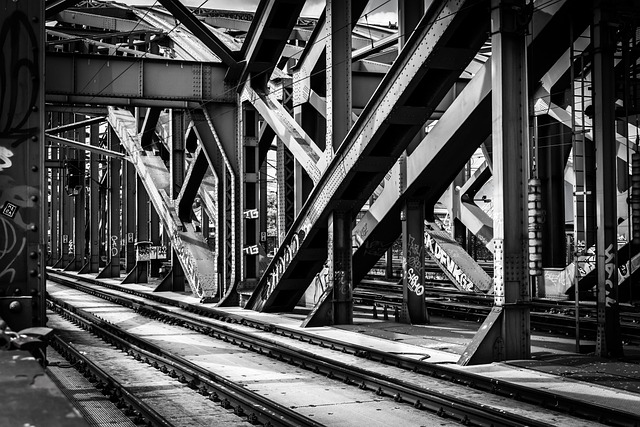Structural steel detailing is a precision-critical process in fabrication and construction, ensuring structural integrity through accurate planning, execution, and advanced technologies like CAD and BIM. Advanced manufacturing tools, such as automated cutting, welding robots, 3D printing, and digital measuring instruments, have revolutionized this field, prioritizing accuracy, speed, and efficiency in creating complex high-strength designs while minimizing waste. Best practices including detailed design drawings, quality control checks, and clear communication ensure every component is assembled precisely for robust structural frameworks.
In today’s construction landscape, precision-driven steel detailing is a game-changer. This meticulous process, integral to fabrication and construction, ensures structural integrity and aesthetic excellence in every project. From understanding the intricacies of structural steel detailing to leveraging advanced technologies and adopting best practices, this article explores the key components revolutionizing the industry. Uncover how these innovations are shaping the future of construction, ensuring accurate execution and unparalleled quality.
Understanding Precision Steel Detailing Importance
Precision-driven steel detailing is a critical aspect of fabrication and construction, ensuring the structural integrity and overall quality of buildings and infrastructure. It involves meticulous planning, cutting, bending, and assembling of steel components to exacting tolerances, often requiring accuracies within millimeters. This precision is not just about achieving aesthetic appeal; it’s about ensuring that structures can withstand immense loads, environmental factors, and time.
In the realm of structural steel detailing, every dimension, angle, and connection must be precisely defined and executed. This meticulous approach is a game-changer in construction, enabling engineers and fabricators to create complex, high-strength designs while minimizing material waste and maximizing efficiency. It’s a testament to the fact that precision is not just an option but a necessity in modern fabrication and construction practices.
Key Components of Structural Steel Detailing
Structural steel detailing involves meticulous planning and execution, ensuring every component is precisely engineered for fabrication and construction. Key components include detailed drawings, which serve as blueprints for assembly. These drawings must encompass all dimensions, tolerances, and specifications, down to the smallest fastener, to guarantee structural integrity.
Another vital aspect is material selection and property data. Choosing the right grade of steel, considering factors like strength, ductility, and corrosion resistance, directly impacts the final product’s performance. Additionally, incorporating advanced technologies, such as computer-aided design (CAD) software and building information modeling (BIM), enhances accuracy, streamlines workflows, and facilitates better collaboration among project stakeholders.
Advanced Technologies in Steel Fabrication
The evolution of advanced technologies has significantly revolutionized steel fabrication processes, bringing precision and efficiency to the forefront in structural steel detailing. Automated cutting and welding systems, for instance, have transformed traditional methods by offering greater accuracy and speed. These machines can precisely cut complex shapes from steel plates with minimal waste, ensuring every component is tailored to exact specifications. Similarly, robotic welding systems provide consistent, high-quality welds, reducing human error and enhancing structural integrity.
Computer-aided design (CAD) software and 3D printing are further examples of modern tools that contribute to the precision-driven nature of steel fabrication. CAD programs enable engineers and designers to create detailed digital blueprints for structural steel components, facilitating easier visualization, modifications, and collaboration. This technological advancement seamlessly integrates with advanced manufacturing processes like 3D printing, allowing for the rapid prototyping and production of intricate steel parts.
Best Practices for Accurate Construction Execution
Achieving precision in construction execution is paramount, especially when working with structural steel detailing. Best practices involve meticulous planning and coordination across all project stakeholders. This includes detailed design drawings that accurately represent the final product, allowing for clear communication of specifications to the fabrication and construction teams.
Regular quality control checks at every stage of the process are essential. Implementing digital technologies, such as laser scanning and 3D modeling, can enhance accuracy and efficiency. Moreover, adhering to strict tolerances and utilizing advanced measuring instruments ensures that each component is fabricated and assembled to the required specifications, resulting in a robust and safe structural steel framework.
Precision-driven steel detailing is a game-changer in fabrication and construction, ensuring structures are not just built but meticulously crafted. By integrating advanced technologies and adhering to best practices, the industry can achieve unparalleled accuracy and efficiency. Structural steel detailing plays a vital role in creating durable, safe, and aesthetically pleasing buildings, setting new standards for excellence in construction.
